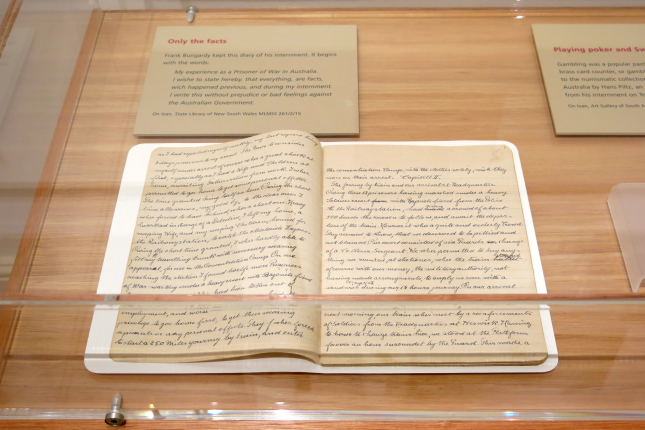
Collection Item used in the History Trust's Interned exhibition
A matter of perspective
What you are looking for will influence the way you conduct your research. You will often have a strong understanding of the local impact of some events and issues. Try also to look at local stories from broader national and international perspectives. For example if you are conducting research for a display about children and growing up in your area there is a range of possible angles you could consider:
- Look locally: you will already know about some of the schools, kindergartens, playgroups, playgrounds in your area. You might have photographs or know about some paper records such as school registers, school magazines. These would make a local good starting point.
- Listen: you have probably heard stories about children’s pastimes told by older members of your community. Think about doing some oral history interviews to preserve and share those stories.
- Look nationally and internationally: to place your community in context, read some general books about childhood or education in Australia or other countries. In this way you see a larger picture of societal change within which the developments in your community took place.
- Hop in a time machine: are you focusing on childhood in a particular era such as the Second World War? Look at general social histories about the Home Front to get insights into the kinds of issues that might have affected children.
- Learn your local history: local newspapers from any era will reveal events and issues in your town or district that impacted upon children.
- Consider local concerns: council records or archives of community groups might tell other stories.
- Seek complexity and diversity: remember to look for documents that might give you different perspectives on the same subject, such as the point of view of a child from an Italian background whose family might have been interned during the Second World War, as compared with the perspective of children from long established local Australian families.
- What’s missing: look for evidence which will allow you to tell stories that have not yet been heard, the different kinds of lives led by children that have not been acknowledged – Aboriginal children, children with disabilities, children in care in institutions and foster homes.
- Make connections: enlarge your research into objects. You might have some war era toys or other related objects like ration cards or signage displaying school evacuation or air raid procedures. You might be able to put such things on display and link them with other records such as photographs or stories from oral history.
Each research path you take will lead you to other possible records you can investigate.

